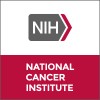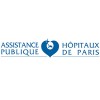
Docetaxel, Doxorubicin, and Cyclophosphamide in Treating Women With Advanced Breast Cancer
Breast CancerRATIONALE: Drugs used in chemotherapy, such as docetaxel, doxorubicin, and cyclophosphamide, use different ways to stop tumor cells from dividing so they stop growing or die. Combining more than one drug and giving them at different times, may kill more tumor cells. It is not yet known which combination chemotherapy regimen is more effective for breast cancer. PURPOSE: Randomized phase I trial to compare the effectiveness of two regimens of docetaxel combined with doxorubicin and cyclophosphamide in treating women who have advanced breast cancer.

Neoadjuvant and Adjuvant Exemestane in Treating Postmenopausal Women With Locally Advanced Hormone...
Stage II Breast CancerStage IIIA Breast Cancer2 moreRATIONALE: Estrogen and progesterone can stimulate the growth of breast cancer cells. Hormone therapy using exemestane may fight breast cancer by reducing the production of estrogen and progesterone. Giving hormone therapy before surgery may shrink the tumor so it can be removed with breast-conserving surgery. Giving hormone therapy after surgery may kill any remaining tumor cells. PURPOSE: Phase II trial to study the effectiveness of neoadjuvant and adjuvant exemestane in treating postmenopausal women who have locally advancedestrogen and/or progesterone receptor-positive breast cancer.

Nipple Aspiration, Ductal Lavage, and Duct Endoscopy in Screening Women at Moderate-to-High Risk...
Breast CancerRATIONALE: Screening tests, such as nipple aspiration, ductal lavage, and breast duct endoscopy, may help doctors detect cancer cells early and plan more effective treatment for breast cancer. PURPOSE: This clinical trial is studying how well nipple aspiration, ductal lavage, and breast duct endoscopy work in detecting cancer cells in healthy women who are at moderate-to-high risk of developing breast cancer.

Limonene Study in Women With Breast Cancer
Breast CancerLimonene is a major component in the essential oils of citrus fruits. It has demonstrated promising breast cancer preventive and therapeutic effects in preclinical model systems. This early phase clinical study will evaluate the distribution of limonene to the breast tissue and its associated biological activities after 2 to 6 weeks of limonene dosing in women with a recent diagnosis of early stage breast cancer. This study will help evaluate the potentials of developing limonene as a breast cancer preventive agent.

Sulindac in Preventing Breast Cancer in Women at High Risk for Breast Cancer
Breast CancerRATIONALE: Chemoprevention is the use of certain drugs to keep cancer from forming, growing, or coming back. The use of sulindac may prevent breast cancer. PURPOSE: This randomized phase I trial is studying the effects of sulindac, to prevent breast cancer, in women at high risk for breast cancer.

Arzoxifene or Tamoxifen in Preventing Breast Cancer in Premenopausal Women at High Risk for Breast...
Breast CancerHereditary Breast/Ovarian Cancer (brca11 moreRATIONALE: Chemoprevention is the use of certain drugs to keep cancer from forming, growing, or coming back. Estrogen can cause the growth of breast cancer cells. Hormone therapy using arzoxifene or tamoxifen may prevent breast cancer by lowering the amount of estrogen the body makes. The use of arzoxifene or tamoxifen may keep breast cancer from forming in women at high risk for breast cancer. PURPOSE: This randomized phase II trial is studying arzoxifene to see how well it works compared to tamoxifen or a placebo in preventing breast cancer in premenopausal women at high risk for breast cancer.

Letrozole in Preventing Breast Cancer in Postmenopausal Women Who Are at Increased Risk for Breast...
Breast CancerRATIONALE: Chemoprevention is the use of certain drugs to keep cancer from forming, growing, or coming back. The use of letrozole may stop cancer from forming or coming back in postmenopausal women who are at increased risk for breast cancer due to high breast density. PURPOSE: This randomized phase II trial is studying how well letrozole works in preventing breast cancer in postmenopausal women who are at increased risk for breast cancer due to high breast density.

PET and MRI in the Follow-up of Neoadjuvant Chemotherapy of Breast Cancer
Breast CancerPredict and follow thanks to imaging the response to neoadjuvant chemotherapy in locally advanced breast carcinoma. Hypothesis : FLT-(18F)PET will be a predictor superior to both FDG-(18F) PET and MRI

A Pilot Study Evaluation of the Efficacy of SonoVue to Detect and Characterise Breast Lesions
Breast TumorsUltrasound is a well-established imaging modality for the evaluation of breast disease. The investigators' objective is to characterise the properties of an intravascular ultrasonographic contrast agent SonoVue (sulphur hexafluoride microbubbles) to improve the diagnostic value of the ultrasound examination in patients with different breast lesions. The final purpose of this ultrasonography is to allow the early detection of tumors and to improve the differentiation between benign and malignant lesions. SonoVue® (sulphur hexafluoride microbubbles) is a microbubbles preparation that is stable, resistant to pressure, and specifically designed to be used as a contrast agent for ultrasound imaging. Contrast-enhanced ultrasound could provide a non-invasive technique to evaluate the morphology of breast tumour vascularity.

Ultrasound and Chemotherapy of Breast Cancer: Relationship Between Early Vascular Changes of the...
Breast CancerThis study intends to assess the ability of contrast-enhanced ultrasound to make the efficacy of chemotherapy in breast cancer precise. This real-time noninvasive and feasible imaging technique allows us, the investigators at University Hospital Tours, to evaluate early vascular changes of breast tumors during treatment. These vascular changes may precede long-term tumoral regression. Imaging of primary breast lesions may be of value in the prediction of late treatment response. An ultrasound will be performed before the initiation, and after the second and the last dose of chemotherapy. To investigate the changes occurring in the vascularization of tumors, we will use an intravascular ultrasound contrast agent SonoVue (sulphur hexafluoride microbubbles). This agent is a microbubbles preparation that is stable, resistant to pressure, and specifically designed to be used as a contrast agent for ultrasound imaging of angiogenesis.
